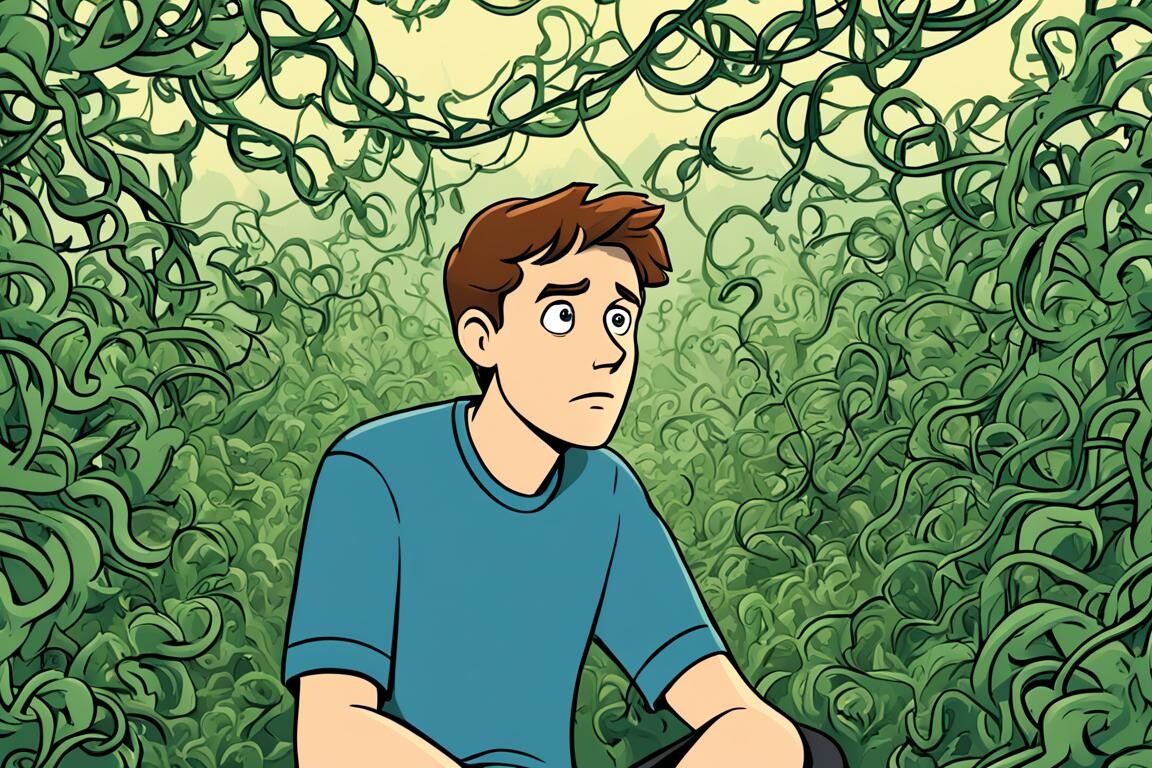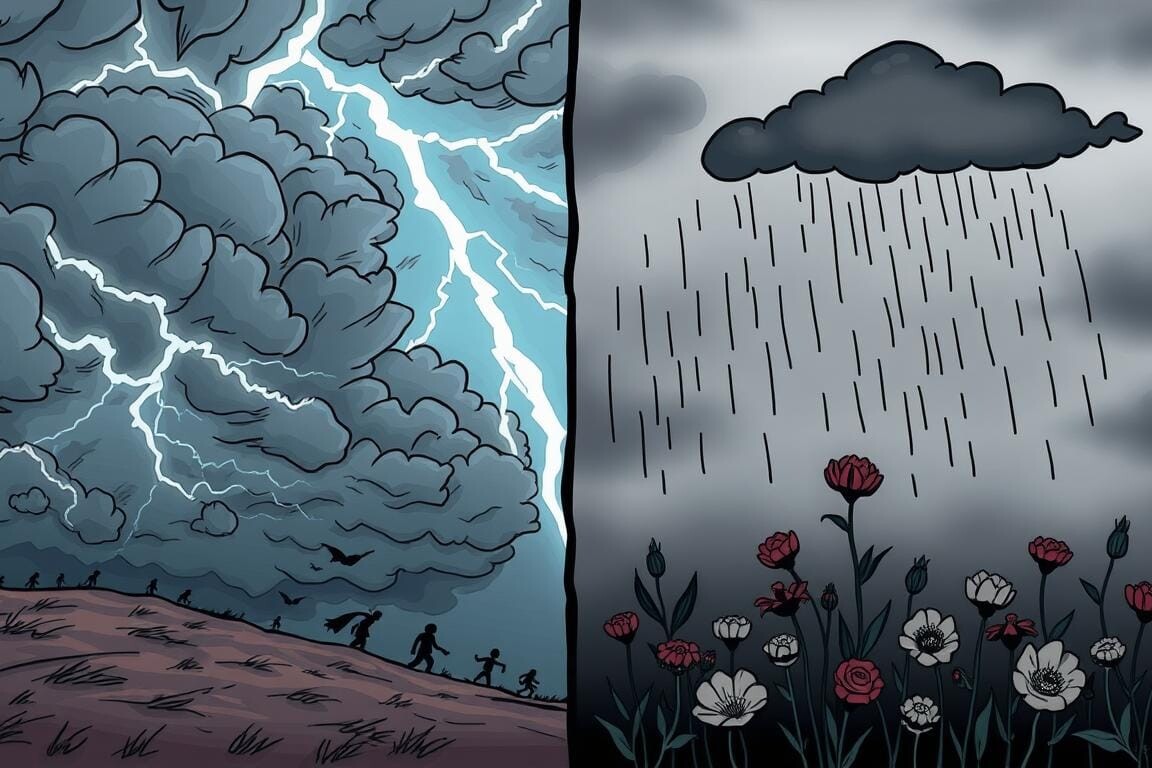Is your child more clingy than usual? Does bedtime come with tears, or does your child complain of stomachaches before school? You’re not alone. Many parents notice behaviors in their children but aren’t sure if it’s just a phase or something deeper. This is where a proper childhood anxiety symptoms checklist can help.
Anxiety in children is real, but often invisible. Kids don’t always say, “I feel anxious.” Instead, they act out, withdraw, or show strange physical symptoms. That’s why we created this detailed guide.
In this blog, we will explain the childhood anxiety symptoms checklist, break it down by age, and help you spot what’s normal and what’s not.
Table of Contents
ToggleWhat is Childhood Anxiety?
Anxiety in children means they worry more than other kids their age. It affects how they feel, think, and act. But unlike adults, children can’t always describe their feelings. Their worry can show up in ways that seem confusing to parents.
There are different types of anxiety disorders in children:
- Generalized Anxiety: Worrying about school, safety, or things going wrong.
- Social Anxiety: Fear of speaking, reading aloud, or being judged.
- Separation Anxiety: Extreme distress when away from parents.
- Specific Phobias: Strong fear of things like dogs, dark rooms, or loud noises.
Stat: “Anxiety disorders are the most common mental health conditions in children, affecting nearly 1 in 10.”
Normal Anxiety vs. Clinical Anxiety
Sometimes, it’s hard to know if your child is just worried or truly anxious.
| Comparison Aspect | Normal Worry | Childhood Anxiety |
| Duration | Short-term (few minutes/hours) | Long-lasting (weeks/months) |
| Impact on Life | Rarely affects daily routine | Affects school, play, sleep, and appetite |
| Reaction Intensity | Calm with reassurance | Panic or meltdowns even with reassurance |
| Physical Symptoms | Mild (butterflies) | Headaches, nausea, frequent bathroom use |
Use this childhood anxiety symptoms checklist to help decide if your child needs more than comfort.
What Causes Anxiety in Children?
Every child is different, but many factors can trigger anxiety. Let’s explore what causes anxiety in children:
- Family history: Kids with anxious parents are more likely to struggle
- Parenting style: Overprotective or overly strict parenting can raise anxiety levels
- Trauma: Past medical procedures, accidents, or losses can leave lasting effects
- Bullying: Regular teasing or rejection can lead to low self-worth
- Screens: Long screen time and social media pressure heighten worry
Stat: “Children with a family history of anxiety disorders are up to 5 times more likely to experience it themselves.”
Understanding these root causes helps in tackling the problem early.
Why Do Parents Miss the Signs of Anxiety in Their Children?
Most parents miss early signs because kids don’t say, “I’m anxious.” Instead, they may get stomachaches, throw tantrums, or avoid activities they once liked.
- Children may not know how to express their feelings.
- Physical symptoms can mislead parents to think it’s a health issue.
- Many families don’t talk openly about mental health, and some parents may be in denial.
This is why using a childhood anxiety symptoms checklist becomes so important.
Childhood Anxiety Symptoms Checklist
It’s time to look at the full childhood anxiety symptoms checklist. These signs can appear in three areas: emotions, body, and behavior.
Emotional Symptoms of Childhood Anxiety
If your child is often upset, cranky, or worried without clear reasons, look closely:
- Worries a lot about future events, school performance, or family safety
- Gets easily irritated or angry without reason
- Cries often or becomes overly clingy, especially at transitions
These emotions can become a daily struggle.
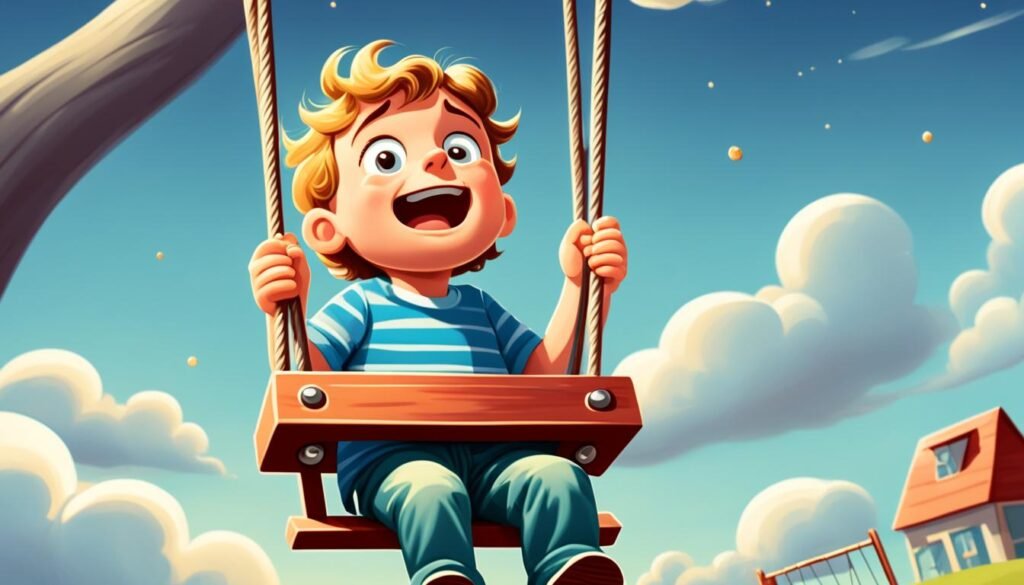
Physical Symptoms of Anxiety in Children
Anxiety in kids shows up in their bodies, too. These symptoms are easy to miss:
- Frequent stomachaches, headaches, or muscle pain with no medical cause
- Has trouble falling asleep or staying asleep
- Feels tired all the time despite resting
- Goes to the bathroom too often
These physical symptoms of stress in children are common in pediatric anxiety.
Behavioral Signs That Suggest Anxiety in Kids
Look at how your child behaves at home, school, or with friends:
- Tries to avoid school, social events, or new tasks
- Throws tantrums before school or scheduled events
- Needs constant reassurance about things going right
Children with anxiety tend to avoid what makes them nervous instead of facing it.
Symptom Monitoring Table
| Symptom Type | Examples | How Often to Monitor |
|---|---|---|
| Emotional | Worry, crying, clinginess | Weekly |
| Physical | Headaches, stomachaches | Daily |
| Behavioral | Avoidance, tantrums, reassurance need | Weekly |
Keep this childhood anxiety symptoms checklist handy to track patterns.
Cognitive Symptoms of Childhood Anxiety
Childhood anxiety can deeply affect a child’s thinking, focus, and memory. It’s important for parents and caregivers to know these effects. This helps them understand and help with the anxiety.
Negative Thinking and Pessimism
Anxious kids often think negatively, expecting the worst and making small things seem huge. This can make them worry a lot, feel scared, and be very pessimistic. It makes it hard for them to stay positive and resilient.
Difficulty Concentrating and Poor Memory
Anxiety can make it hard for kids to focus, remember things, and do well in school. They might worry a lot and have trouble concentrating because of it. This can stop them from learning and doing well in school.
It’s key to notice and help with these signs of anxiety in kids. By dealing with the anxiety, parents and caregivers can help kids get back on track. This way, kids can do better in all areas of life.
Anxiety and Sleep Disturbances
Childhood anxiety can really affect a child’s sleep. Anxious kids often find it hard to fall asleep, stay asleep, and have peaceful sleep. This can cause tiredness, irritability, and trouble focusing during the day.
Anxiety and sleep issues in children are linked in a complex way. Anxiety can make kids think too much, worry, and feel physical symptoms that stop them from relaxing. On the other hand, not sleeping well can make anxiety worse, creating a tough cycle.
Here are some sleep problems anxious children might face:
- Difficulty falling asleep at bedtime
- Frequent waking during the night
- Nightmares and night terrors
- Restless or fitful sleep
These sleep issues not only hurt the child but also the whole family’s routine and relationships. Parents need to tackle the anxiety and help their child develop good sleep habits. This is key for the child’s growth and happiness.
Knowing how anxiety and sleep issues are linked helps parents help their child. By tackling anxiety and setting a regular bedtime routine, parents can help their child sleep better. This can greatly improve their child’s life.
Read: Can Meditation Improve Sleep for Those With Anxiety?
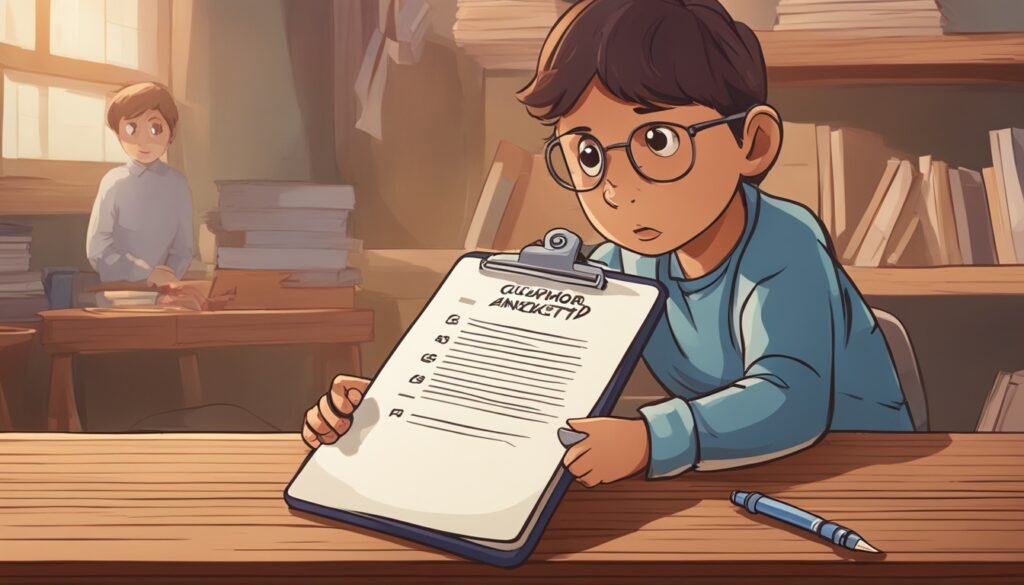
How Do Anxiety Symptoms Differ by Age in Children?
Anxiety doesn’t look the same in every age group. Here’s how it may show up by age.
Anxiety in Toddlers and Preschoolers (3–5 Years)
Young kids often show anxiety through actions, not words:
- Cries loudly or throws tantrums when separated from parents
- Has frequent nightmares or won’t sleep alone
- Refuses to go into rooms alone or clings tightly to one caregiver
These are often early signs of pediatric anxiety disorders.
Read: Managing Separation Anxiety in Babies: A Parent’s Guide
Anxiety in Children (6–9 Years)
As school starts, anxiety often shifts to academics and friendships:
- Refuses to go to school (school refusal)
- Worries about grades or making mistakes
- Complains of stomach pain before class
- Shows perfectionism or becomes self-critical
Watch out for drops in school performance or fear of making small errors.
Common Signs of Anxiety in Preteens (10–12 Years)
Older children may try to hide their fears but show them in different ways:
- Withdraws from social settings
- Constantly bites nails, chews pencils, or fidgets
- Says things like, “I’m stupid,” or fears others will laugh at them
- Terrified of embarrassment, even in simple activities
This age group shows the need for emotional regulation support.
Read: Anxiety in Adolescence: Recognizing and Managing Symptoms
When to Seek Professional Help?
As parents, we always want the best for our kids. Knowing when to get help for childhood anxiety is key. Getting professional support can really help your child manage their anxiety better.
If your child’s anxiety doesn’t go away, affects their daily life, or makes them really upset, it’s time to get help. Think about talking to a therapist, counselor, or child psychologist who knows about treating anxiety in kids.
- Your child’s anxiety stops them from doing things, going to school, or making friends.
- The anxiety makes them have headaches, stomach aches, or trouble sleeping.
- Your child acts out more, gets angry, or avoids things that make them anxious.
- You’ve tried to help at home, but things keep getting worse or your child isn’t doing well.
Remember, asking for help is a sign you care deeply about your child’s health. A mental health expert can give a full check-up, create a plan just for your child, and help your family deal with anxiety.
Read: Child Health Risks And Health Checkup
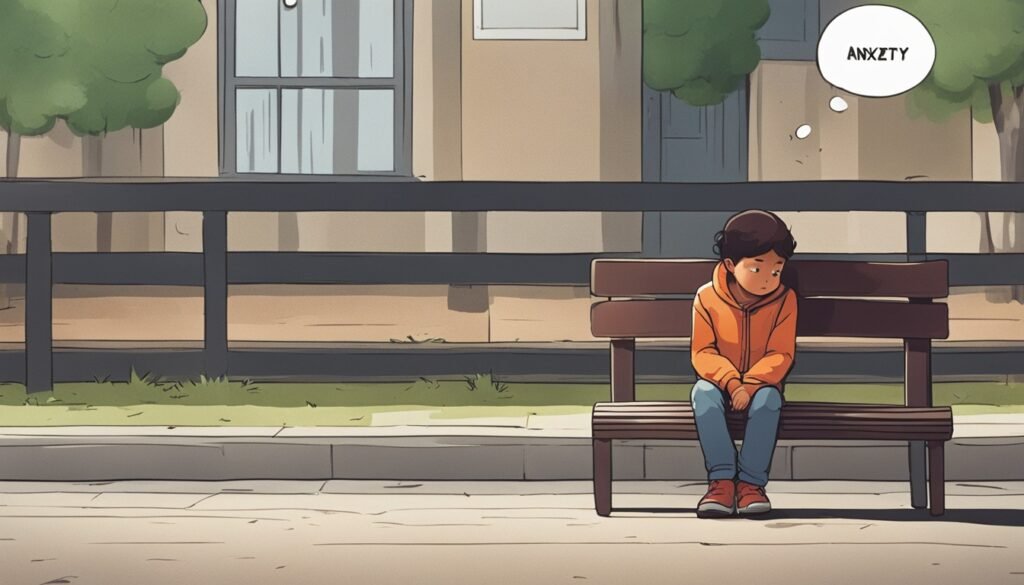
Supporting Your Child at Home
When a child has anxiety, it’s important to create a supportive home environment. Parents are key in teaching their anxious kids coping strategies and healthy habits. This helps them manage their feelings better.
Creating a Practical Coping Plan
Start by making a coping plan with your child. Include techniques like deep breathing, visualization, or muscle relaxation for when they feel too much. Encourage them to use these often, so they become easy habits.
Promoting Healthy Routines
Healthy routines can make an anxious child feel more secure. This means having a regular sleep schedule, staying active, and eating well. These habits help our kids become more resilient and handle their anxiety better.
Supporting an anxious child is a team effort. By making a coping plan and promoting healthy habits together, we help our kids deal with their anxiety and do well.
What Early Interventions Help Reduce Anxiety in Kids?
Interventions should be gentle but consistent:
- Cognitive Behavioral Therapy (CBT): Helps kids challenge and replace worried thoughts
- Mindfulness & Journaling: Improves awareness and lowers stress
- Family Therapy: Educates parents to support anxious kids better
- Medication: Only in serious cases and always under medical advice
With timely help, most children show improvement within a few months.
Helplines and Support Services
If your child is in crisis or you need help right away, here are some 24/7 services:
- The Anxiety and Depression Association of America (ADAA) Helpline: 1-240-485-1001
- National Suicide Prevention Lifeline: 1-800-273-8255
- Crisis Text Line: Text HOME to 741741
For ongoing support, look into local and national groups like the Child Mind Institute, the National Alliance on Mental Illness (NAMI), and your school’s counseling services.
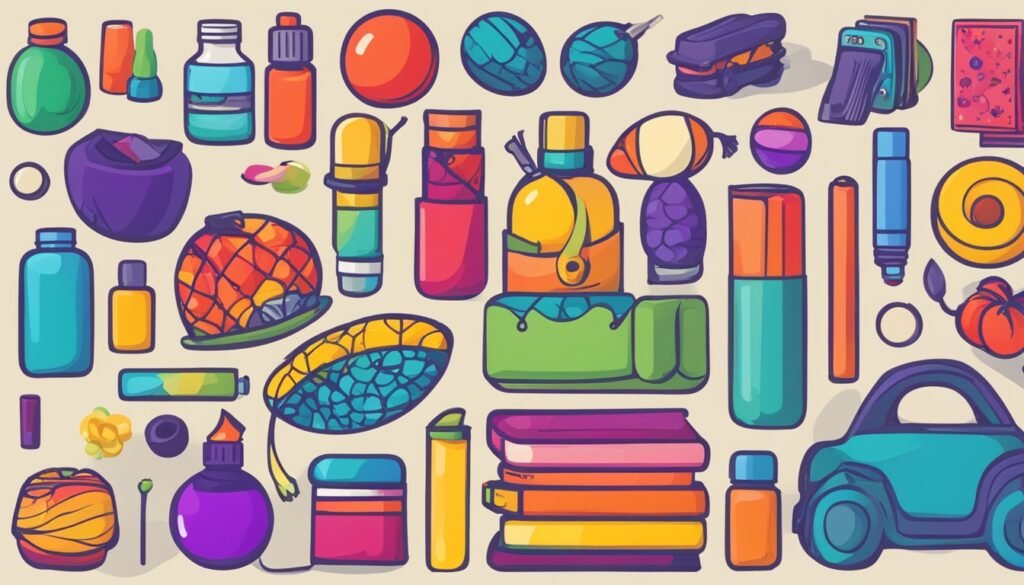
Can a Neurologist Help With Your Child’s Anxiety?
Your child doesn’t have to struggle alone. If you’re using this childhood anxiety symptoms checklist and spotting multiple red flags, don’t wait. Support is available.
Dr. Chandril Chugh is a US-trained, board-certified pediatric neurologist with expertise in childhood mental health, anxiety, ADHD, and neurological issues. His approach combines medical knowledge with a child-first attitude.
Visit the clinic or book an online consultation today to understand what’s really going on in your child’s mind.
Let’s give your child the peace and support they deserve.
FAQ
What are the physical symptoms of childhood anxiety?
Kids with anxiety might feel their heart race and breathe fast. They could also get headaches, stomach aches, or feel sick to their stomach. These feelings come from the body’s fight-or-flight response to anxiety.
How can we recognize behavioral signs of anxiety in children?
Anxious kids might get angry, act out, or avoid things. They might also refuse to do things or show defiance. These behaviors are ways they try to deal with their feelings.
What are the cognitive symptoms of anxiety in children?
Kids with anxiety might think negative thoughts and expect the worst. They might find it hard to focus or remember things. These thoughts and challenges can make it tough for them to function and feel good.
How does anxiety affect a child’s sleep?
Anxiety can make it hard for kids to fall asleep or stay asleep. They might have nightmares or night terrors. Not sleeping well can make anxiety worse, so it’s key to help them develop good sleep habits.
What’s the difference between normal anxiety and a clinical anxiety disorder in children?
It’s normal for kids to feel worried or scared sometimes. But if they worry a lot, all the time, and it gets in the way of their life, they might have a clinical anxiety disorder. They need help from a professional then.
How can parental anxiety impact a child’s emotional well-being?
When parents are anxious, their kids can feel it too. They might copy their parents’ ways of handling emotions. This can make them more anxious.
When should parents seek professional help for their child’s anxiety?
Get help if your child’s anxiety is really bad or lasts a long time. Look for signs like a lot of distress, avoiding important activities, or not being able to handle anxiety at home.
What are some practical strategies for supporting an anxious child at home?
Help your child make a plan to cope with anxiety. Make sure they get enough sleep, exercise, and eat well. Also, create a supportive environment that helps them feel strong and manage their feelings.
Source Links
- https://www.rch.org.au/kidsinfo/anxiety-primary-aged/ – Kids Health Information : Anxiety
- https://www.comfortinganxiouschildren.com/signs-child-anxiety-checklist/ – Signs of Child Anxiety Checklist Comforting Anxious Children
- https://www.mendability.com/articles/anxiety-checklist-how-do-i-know-if-my-child-has-an-anxiety-problem/ – Anxiety checklist: How do I know if my child has an anxiety problem?
About The Author

This article is medically reviewed by Dr. Chandril Chugh, Board-Certified Neurologist, providing expert insights and reliable health information.
Dr. Chandril Chugh is a U.S.-trained neurologist with over a decade of experience. Known for his compassionate care, he specializes in treating neurological conditions such as migraines, epilepsy, and Parkinson’s disease. Dr. Chugh is highly regarded for his patient-centered approach and dedication to providing personalized care.
→ Book a consultation to discover which remedies suit your needs best.


